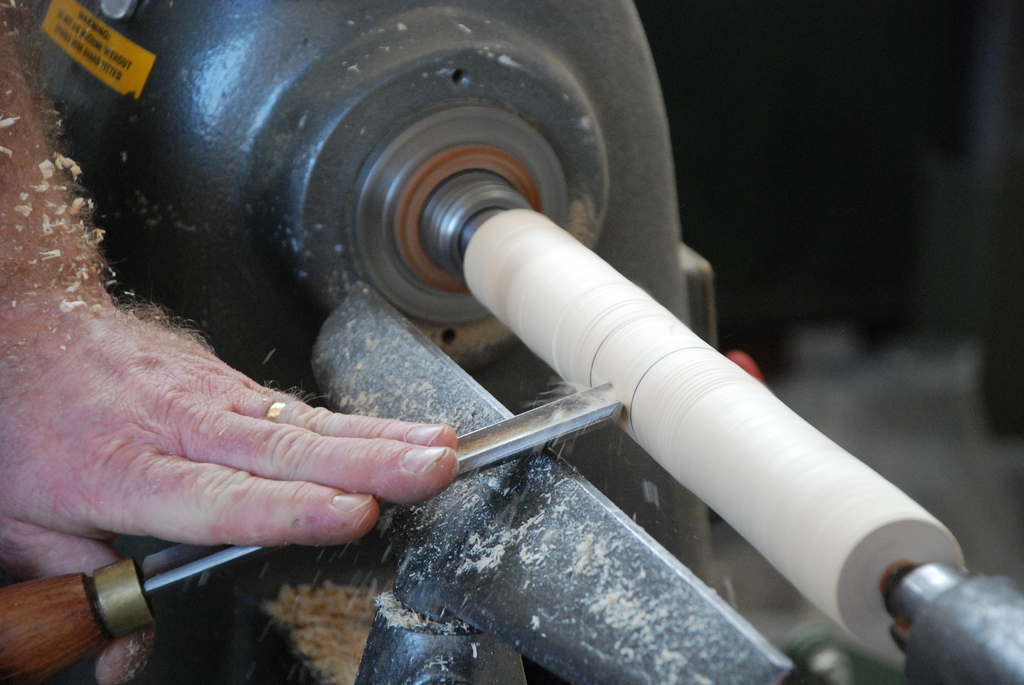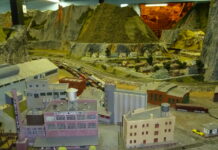
The best mini lathe will shape that hunk of metal or wood perfectly round. It doesn’t matter if you operate a lathe as a hobby or as a professional and are looking for a mill combo.
Lathes, which use to be massive, have been an important tool in carpentry and metal-working over the last hundred years.
Smaller mini lathes (also known as micro lathes) have been created to allow them to fit on work benches in garages or workshops.
Read customer reviews of micro lathes on Amazon.
Simple structure
These mini versions carry a simple, 3-piece structure: a headstock, bed, and tailstock, with varying motor sizes.
Some allow electronically controlled speed variation, while others involve speed variation through changing the belt’s position.
Weight and size can still vary among the mini lathe community, and can be a significant adversary if the work space is small.
There are four designations that refer to the maximum length and diameter of a work piece that a particular lathe can work on. Those designations are 7×10, 7×12, 7×14, and 7×16 inches.
A roller-bearing headstock is the preferred choice over the plain-bearing type. One huge advantage of this is that ball or taper roller bearings are easier and cheaper to replace and can return a headstock to as-new condition.
Opinions vary on what is the best lathe bed — whether it is the “English” flat or the “American” V ways.
Backgears
Lathes that are backgeared have gears mounted at the rear of the headstock. When engaged, the backgear reduces the spindle speed and significantly increases torque, making even the biggest faceplate-mounted jobs an easy task. A small lathe, properly fitted with a backgear, has the capability to cut threads and tackle large-diameter facing, heavy-duty drilling, and big-hole boring.
When combined with a backgear, a gap bed is a great feature to have. It allows a small lathe to work beyond normal capacity. The gap can be found below the chuck in the bed or the bed section can be removable.
Screwcutting requires slow speeds, more so if the operator is a novice or if the job is extremely intricate. Higher speeds means that screwcutting will be problematic, even impossible. Lathes with screwcutting have a power feed down the bed.
Find a lathe with a T-slotted cross slide as it can be used as a boring table and can mount accessories such as a rear toolpost and milling slide.
A resourceful gear mechanism, a tumble reverse, creates the effect of reversing travel direction of the carriage and subsequently the cutting tool, too. When in neutral, it lets the headstock spindle quietly and freely rotate, which is perfect if working next to a bedroom or nursery.
Metal cutting
For metal cutting, use an electronic variable-speed drive or a traditional countershaft, where speeds can range from 100, 500, and 250 r.p.m. to 166, 83, and 42 r.p.m. This is the range usually found in almost-perfect solutions.
Most lathes will come with a compound slide rest, which is a slide that passes over the bed and has an individual “tool” or “top” slide that it bolted to it so it can be round angled. Finding a lathe with a T-slotted cross slide is best when needing flexibility. This type of slide can also be used as a boring table and can mount rear toolposts and milling slides.
A quick-set toolholder can also be a very useful addition. Most lathes are equipped with a 4-way toolpost or a single-tool toolholder, which are adequate to hold an assortment of tools that are used for special jobs. However, when a height-adjustable toolholder is added, exact settings can be locked on each tool in each holder, and then each tool can be instantly switched out as needed.
Tools, supplies, and materials
Before your new lathe arrives, plan ahead and get the tools, supplies, and materials that will work with it.
Make sure you have a supply of WD-40, white lithium grease, and kerosene. Buy disposable pails for the parts that need to be cleaned in the kerosene or WD-40.
Stock up on cheap 2” and 3” brushes found in the paint department of any hardware store.
Make clean up easy, and stock up on newspapers and cardboard.
Keep handy the wrenches needed to adjust gibs as needed.
What is the best mini wood lathe?
Questions to ask yourself before make a purchase include:
- Are looking for a lathe that fits in a small space?
- Are you looking for a unit that is geared more towards finely detailed, small scale objects and projects requiring a subtle touch?
- Do you want a unit that only does large scale projects and has a lot of power?
- Do you need an extremely variable and flexible work horse?
Find the best mini lathe in 2023 on Amazon.
Originally posted 2023-01-06 15:07:54.


